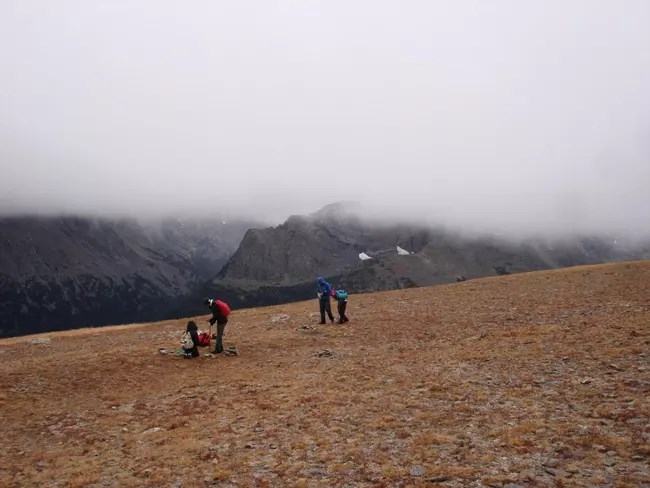Last updated: February 6, 2023
Article
Soil Respiration

NPS/Sarah Schliemann
Dr. Sarah Schliemann, MSU Denver
Roughly one third of RMNP is composed of alpine tundra – the land above the trees. This complex ecosystem is home to some of the most fragile flora in the park. Over the last three years, researchers from the Metropolitan State University of Denver have focused on what’s beneath the alpine vegetation: alpine soil.MSU’s research has focused on soil respiration in RMNP, particularly in the alpine ecosystem. Soil respiration is when soil organic matter decomposes, releasing carbon dioxide; it is also a key indicator of soil health. Soil plays a vital role in storing carbon dioxide throughout the world; under normal climate conditions, alpine soils can be particularly effective at storing carbon, usually in the form of partially decomposed plant material. However, alpine soil’s effectiveness as a carbon sink is reduced when soil temperature rises. This change can not only drastically affect soil respiration, but the plant life that relies on it as well.
MSU’s studies provide an important foundation for further research into alpine communities and the effects a changing climate might have on them. Furthermore, their research provides an opportunity for undergraduate students to participate in significant field research. Continued evaluation and documentation of changes in the soil of different landscapes provides vital information for present and future studies.
